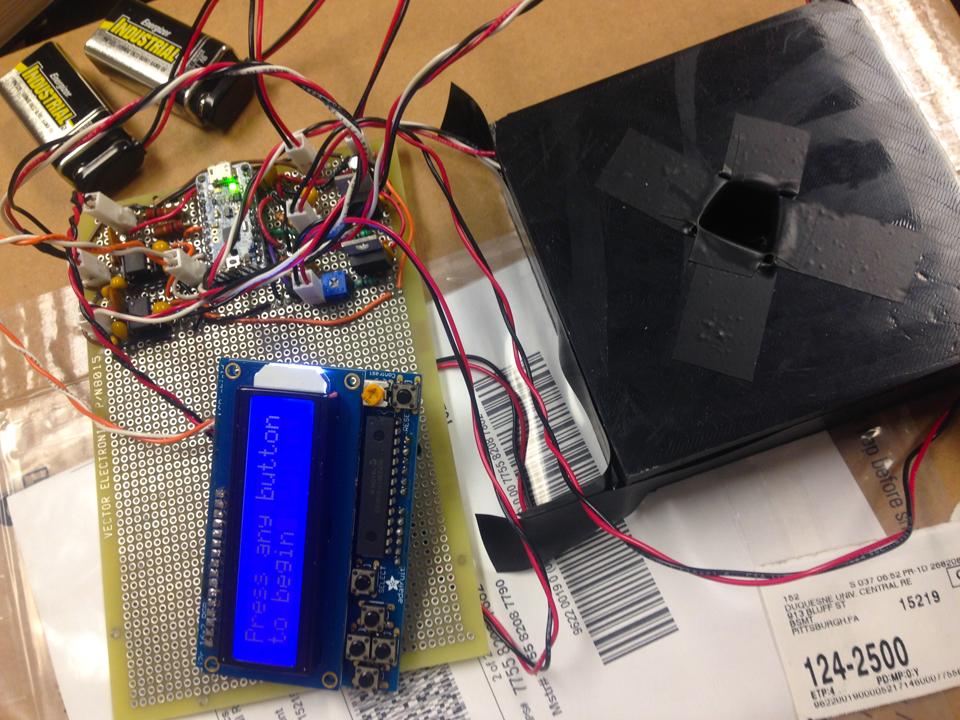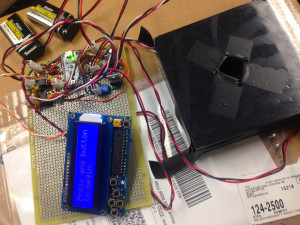

Duquesne faculty and students have developed a portable test for lead in water. The new device could someday be used by municipalities such as Flint, Michigan to detect harmful levels of lead in drinking water, which causes several health problems.
By Kailey Love | The Duquesne Duke
A device created by Duquesne students and faculty that could fit in a pocket has the potential to prevent the next lead poisoning disaster, such as the current crisis in Flint, Michigan.
Chemistry professor Partha Basu, physics professor Ted Corcovilos and environmental science graduate student Aria Parangi have created a working prototype that uses a chemical reaction and LED lights to detect lead in water.
According to Gage Tiber, a junior physics student who also worked on the project for almost a year, the detector is meant to be an affordable safety device that can be purchased by municipalities to detect lead in people’s homes and businesses.
“The goal is a price tag around $500, which is obviously too expensive for home use, but a [local government] department could buy three or four of these to have on hand,” Tiber said.
The project began last spring, when Basu took a lead-detecting chemical he discovered in 2008 to Corcovilos, who had the equipment and knowledge to incorporate the chemical into a compact, portable device.
The two already had a working prototype when the national media began reporting on the health crises occurring in Flint due to high lead concentrations in the small rustbelt town’s drinking water. Suddenly, Duquesne’s compact prototype became even more interesting.
“Because of Flint, this whole field [of lead detection] is in an uproar, and we have a competitive advantage because we already have a working prototype,” Tiber said.
According to Tiber, Basu and Corcovilos are meeting with potential investors to finance the last stages of development for the device, which is close to meeting Environmental Protection Agency requirements.
“The EPA says that around three parts per billion is a safe amount of lead,” Tiber said. “Right now, our device can detect around six parts per billion.”
In other words, the device can detect high amounts of lead, but will need to become more precise before it can be mass-produced.
According to Corcovilos, the current equipment being used to detect lead in water is large and expensive, which makes it hard for small towns to monitor their lead levels. Duquesne’s device is portable, inexpensive and does not require training to use.
“You don’t have to know anything about the science to get this thing to work,” Tiber said. “As long as you can push buttons, you can use it.”
The device captures water in a small box, then adds the detecting chemical. With the push of a button, LEDs send a burst of ultraviolet light and a sensor detects the wavelengths that bounce back from the water. Certain wavelengths indicate different levels of lead, and information pops up on a screen.




